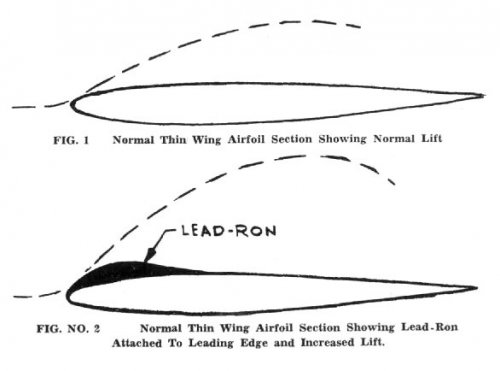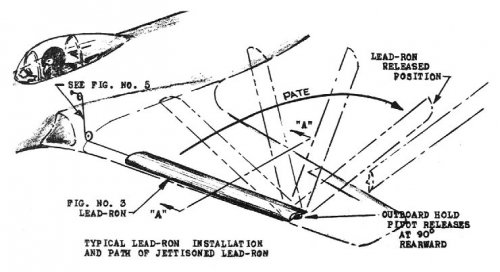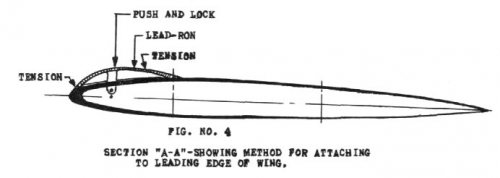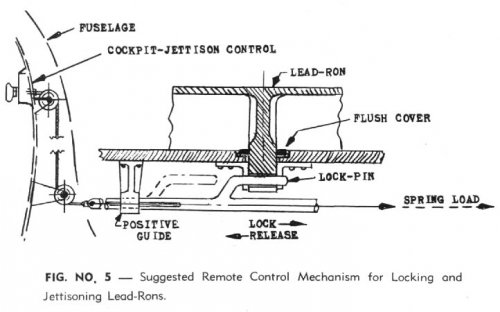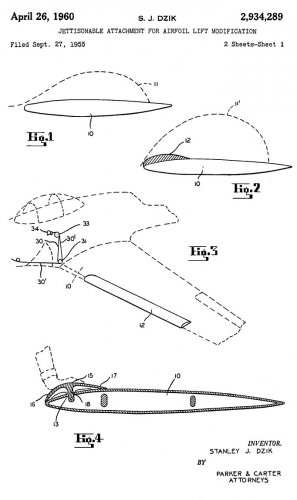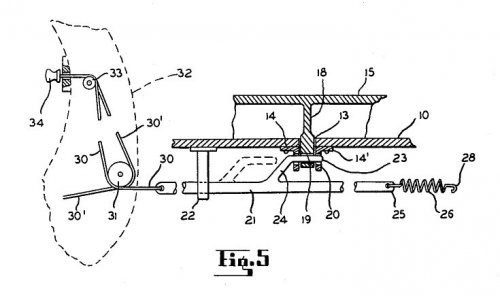- Joined
- 25 June 2009
- Messages
- 13,749
- Reaction score
- 2,940
Lead Rons
S. J. Dzik
INTRODUCTION
The term "LEAD-RONS" is new and can be described as auxiliary equipment for aircraft adoption. The advantages and practical use of Lead-Rons can be highly accepted to render positive results where thin airfoil sections do not create suitable lift efficiency due to its characteristic design for sonic speed performance. Thus the aircraft take-off performance is penalized because of its design.
It has already been established that aircraft with thin wing design airfoil section, plus the fact the chord datum line is zero and in most cases negative up to two or more degrees from horizontal center line of the aircraft. This design criteria however, results with understandable aerodynamic efficiency at take-off and requires the aircraft to use long run-ways and speed. Most jet powered aircraft can carry greater payloads, but are penalized because of prementioned facts.
Substantially heavier payloads can be added to the aircraft and lifted into the air on initial takeoff with the adoption of quick attach and jettisonable Lead-Rons.
Lead-Rons can be aerodynamically designed and adopted to any thin wing airfoil section as described further in this report.
SUMMARY
The main purpose of Lead-Rons is to give greater lift efficiency in time of emergency when over loaded aircraft require greater lift efficiency on short runways for safe take-off. Paramount advantage of Lead-Rons is the fact that the aircraft can jettison the Lead-Rons for disposal after altitude and safe flying speed has been acquired. Following is a list of tentative advantages that can be realized using Lead-Rons.
(1) Lifting heavily overloaded aircraft over mountainous terrain.
(2) Lifting fuel aircraft tankers off short runways.
(3) Lifting overloaded evacuation aircraft under emergency conditions.
(4) Lifting heavy military jet fighters and bombers for climbing ability when rate of climb is the prime factor in terms of time element.
Lead-Rons can be aerodynamically designed for any thin wing section with no major redesign of wing structure. A suggested method for quick installation and jettisonable release mechanism is shown in this report. Either plastic's or light metals can be used to fabricate these expendable Lead-Rons. Cost to manufacture Lead-Rons would be very low because of simple and non complex design.
With further research and experimentation on the adaptability of Lead-Rons for increasing wing lift efficiency and increasing aircraft safety standards particularly during take-off. It would not only benefit military aviation but private and commercial as well.
Stan J. Dzik worked as an engineer at Globe Steel, Douglas Aircraft, Waco Aircraft and at the USAAF's Wright Field, and became chief engineer for Corben after the war.
Sources:
- Experimenter, November and December 1955
- Patent: JETTISONABLE ATTACHMENT FOR AIRFOIL LIFT MODIFICATION Filed Sept. 27, 1955

